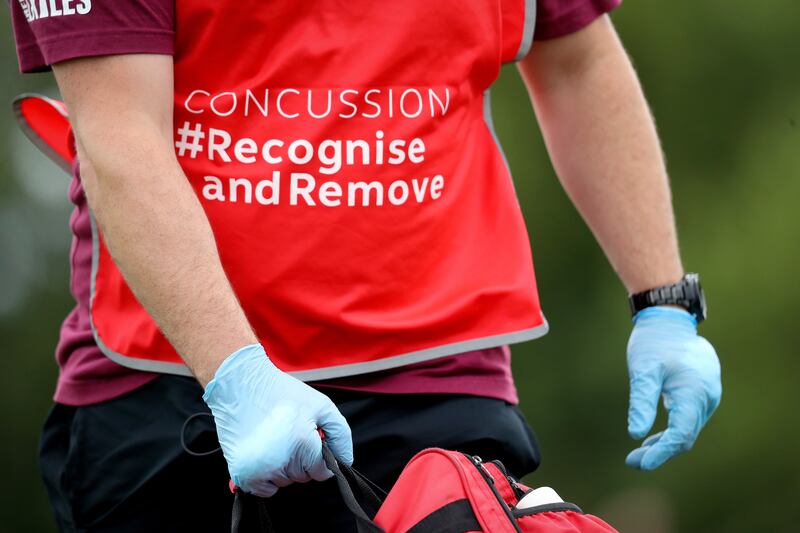From next week elite rugby players in Ireland will begin to contemplate how smart technology called Instrumented mouthguards can protect their health. The appliance, fitted into gum shields, is capable of measuring forces of impact in real time and flag players who have suffered hits above a certain threshold to doctors.
The mouthguards contain a system that gathers data as the player wears it throughout the game. It then wirelessly transmits any information relating to a collision, including the location, direction and motion of the contact.
The technology has been in use in elite women’s rugby since October with Irish rugby players lined up to use it in this season’s Six Nations championship. The mouth guards will also be required in training.
World Rugby says they will ensure that any player who experiences a hit that is not spotted by team medics, the referee or television cameras, or who doesn’t show concussion signs, will no longer remain on the pitch.
[ Dominic Ryan: The terrifying concussions which have forced my retirementOpens in new window ]
Instead, when the mouthguard registers an acceleration above a certain level, it will immediately send an alert to an app that is being watched by an independent doctor. For men, the acceleration is measured as 70g and 4,000 radians per second squared and for women it is 55g. The numbers 70 and 55 are important.
If those limits are reached the player will be taken off and will have to undergo a head impact assessment.

World Rugby is hailing the device as another part of the tool kit in their ongoing tailoring of the game to keep it safe. Most players, although not all, currently use mouthguards with the new device similar in design to the old ones and not expected to cause discomfort.
Players who choose not to wear the mouthguard will be subject to the “recognise and remove” policy. That means if a player sustains a head impact that could be a concussion, they will automatically have to sit out the rest of the game, rather than undergo the in-game assessment.
“You can still play without a mouthguard but if you don’t have a mouthguard you can’t access that part of the head injury assessment,” explained Ross Tucker in his podcast The Real Science of Sport. Tucker also works as a science and research consultant for World Rugby.
“You’re being treated as a recognise and remove instead. The only player who will now be able to go off for that assessment is the one wearing the mouthguard. They [players not using the mouthguard] will be immediately and permanently removed. No substitutions.”
Critics claim those player who chose to wear the mouthguards will, essentially, be treated differently to those who chose not to wear them, making it coercive.
According to Tucker there has been apathy from both players and coaches to wearing the device. For three years, authorities tried to get it into the game without success, so the only way to get all players to use it is to mandate them and make it part of the HIA process. In other words, if a player does not wear the mouthguard, they are opting out of the HIA process.
A further issue is that there is no known number for head acceleration that can tell if a player is concussed. The mouthguard is not a diagnostic device but as Tucker explains, it “sends up a flare” that tells the medics to get the player off the field and get them into the diagnostic process.
The problem is the game cannot have seven players off the field at once because of high readings pinging on the doctors Ipad. The numbers 55 and 70 have largely been decided on what the stakeholders allow. It is pragmatism, not science.

If the numbers are set at a lower threshold, multiple players would be off the field at the same time with too few doctors available to conduct examinations. According to the 78,000 impacts recorded over the years in elite rugby, a significantly lower setting would see the doctor’s iPad would ping 10 times per game, overwhelming the medical infrastructure.
There are currently around four HIA removals every five matches.
“It is coercive, makes players play more and designed to protect from future litigation. It is not diagnostic or predictive. It should be resisted by players’ representative bodies,” said an Irish doctor associated with rugby.
[ Rugby authorities braced for the implications of ticking legal time bombOpens in new window ]
Brain injury researcher and campaigner Dr Willie Stewart also weighed in on the issue saying World Rugby’s use of language around mouth guards reducing concussion is “specifically, not true in rugby”.
In a statement World Rugby recommended that players at all levels of the sport wear a mouthguard, after research in ice hockey found that as well as protecting against dental injuries, they can reduce the risk of a concussion by 20 per cent.
To that Stewart tweeted: “ability of mouthguards to protect against head .. injuries in sport ... “neuromythology” rather than hard science.”
Either way World Rugby are fully behind their claim of an important innovation.

















